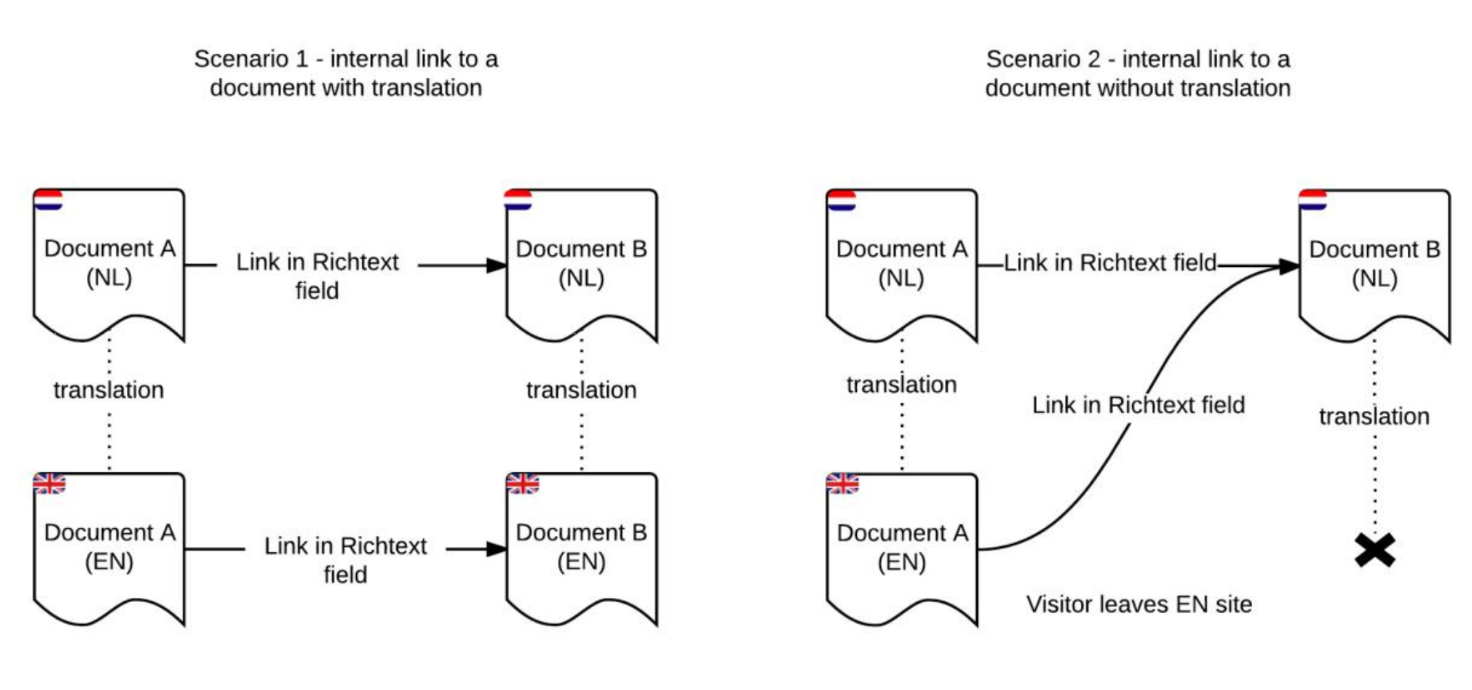Guideline for setting up fields with links
The Translations Add-on can be enabled or disabled per document type and at the individual field level. This makes sense as not all document fields contain content that needs to pass through the external translation platform. This applies to most non-textual fields such as number fields, date fields, list fields and image/asset/document link fields.
Translations for these type of fields are managed in the CMS and should not be overwritten every time a new translation is imported from the external translation platform. The add-on provides for this by allowing you to configure per document type which fields are enabled for translation by the add-on. Only enabled fields will have their contents overwritten when a new translation is imported.
Managing links inside translated variants
Content stored in the CMS can contain embedded references in the form of references to assets, images and documents and external links. Managing these references and links is not a task for the translator whose responsibility lies in providing translations of purely textual content. The references inside translated documents should thus be manageable by content editors inside the CMS.
The default behavior of the add-on is to overwrite the content of fields that are enabled for translation whenever a new translation is imported. This means that for dedicated link fields (hippo:mirror for internal links and usually String fields for external URL's) translations should be disabled. Editors can then update the links in the translated variants and these will remain intact upon the next import of a translation.
Links inside Rich Text fields
Links stored inside Rich Text fields form an exception to the process described above as they are embedded inside the content. Any changes inside a Rich Text field of the translated variant will get overwritten when a new translation is imported (if the field is enabled for translation). To account for this the add-on automatically updates any internal links inside Rich Text fields according to the diagram below.

Internal links in Rich Text fields are automatically updated when importing a new translation so that they point to the translated variant of the linked document (if that exists) in the same language as the incoming translation.
Links inside Link (mirror) fields are not automatically updated and this is for a reason. These fields should not be sent to the translation service at all. Managing the link structure of a site is after all not the responsibility of translators. The add-on should be disabled for these fields altogether inside the plugin settings and the contents for these fields should be managed directly inside the translated variants inside the CMS.
Guideline
Use the table below as a guideline to configuring the add-on for different types of fields.
| Type of field | Field translated outside CMS? | Enable in translations add-on | Content is overwritten with import of translation | Internal links automatically rewritten |
|---|---|---|---|---|
| Any field type | no | no | no | - |
| All field types except Rich Text field | yes | yes | yes | no |
| Rich Text fields | yes | yes | yes | yes |

